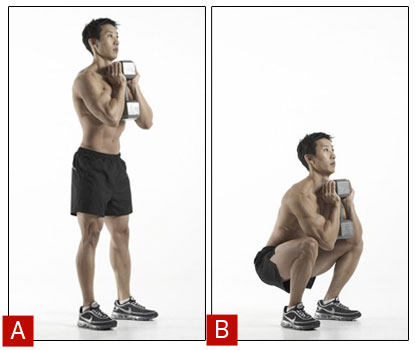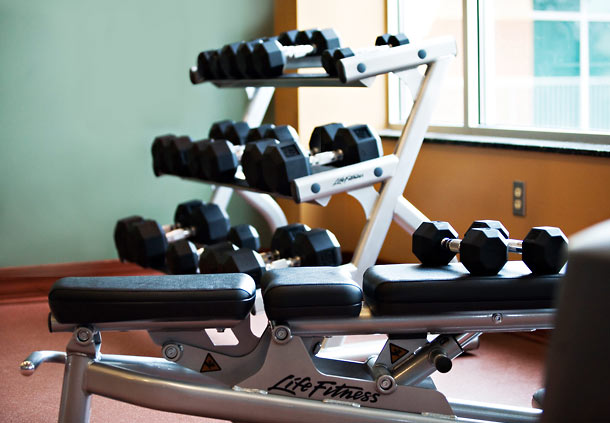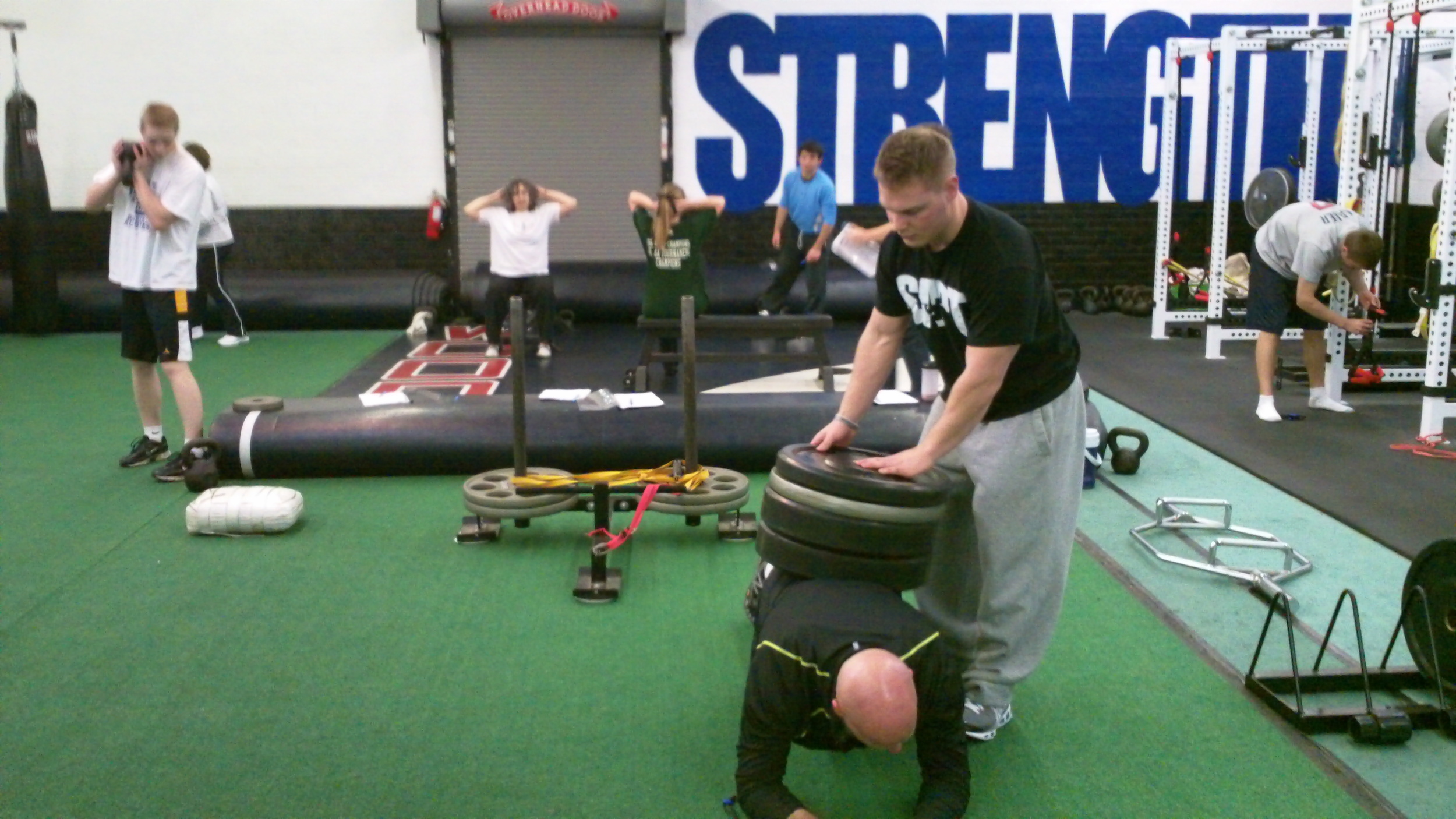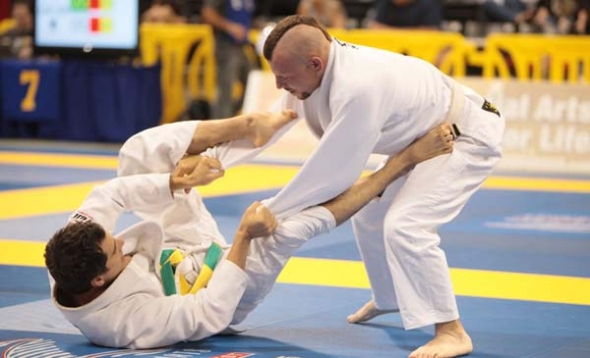SAPT Exercise of the Week: Stir the Pot Alphabet
 When it comes to training someone's "core," I'd often rather have them jump in front of a moving a school bus than perform endless sit-up and crunch variations. However, I've explained the "why" on this site multiple times (and most people are caught up to this information by now anyway), so I won't belabor the point here and now.
Moving on, planks (and their variations) tend to be one of the best bang-for-your-buck exercises when it comes to training the "core," or - the muscles that control the pelvis and thoracic region with respect to the lumbar spine - to put it in "non-bro" terms.
When it comes to training someone's "core," I'd often rather have them jump in front of a moving a school bus than perform endless sit-up and crunch variations. However, I've explained the "why" on this site multiple times (and most people are caught up to this information by now anyway), so I won't belabor the point here and now.
Moving on, planks (and their variations) tend to be one of the best bang-for-your-buck exercises when it comes to training the "core," or - the muscles that control the pelvis and thoracic region with respect to the lumbar spine - to put it in "non-bro" terms.
This is why, once someone has mastered the basic plank, I'll progress them to something more difficult (and fun!) than just holding a static bridge for 60 seconds. This is where something like a move-the-mountain plank or a plank bodysaw will come in handy to make someone's abdominals hate life. Today I'd like to share another plank variation I love to use, that is challenging and also helps keep those with ADD a specified task to focus on.
Here we have SAPT's exercise of the week, along with allowing you to finally understand why I placed a picture of a random man stirring a large pot at the beginning of this post (don't pretend like you didn't doubt me).
Stir the Pot: Alphabet
What is it: This is a progression from the classic "Stir the Pot" exercise that Dr. Stuart McGill invented. It trains your core to resist extension and rotational forces, on top of improving core endurance, a key component in keeping back pain at bay.
The idea for the featured variation actually came to me after Coach Chris invented the Pallof Press: Alphabet back in 2010.
How to do it: Get in a nice plank position (abs tight, glutes SQUEEZED, yadda yadda yadda). Then, trace the alphabet in big, CAPITAL letters. Take your time here. and ensure that there is minimal movement taking place at your low back and hips.
I typically like to progress this by having someone start by tracing just a portion of the alphabet (ex. A-L) and eventually have them work through the entire alphabet. Perform 2-3 sets, working as far through the alphabet as you dare.
To make it even more difficult, you could have someone appear out of nowhere and samurai-kick the ball. I heard my friend Tony Gentilcore mention this for the original stir the pot, and I feel it is a fair progression.
 Why I like it: As mentioned above, it's a good fit for us ADD folk in the crowd. Not to mention it will kick your butt. While an advanced athlete can make a plank very difficult if they put their mind to it and actually focus throughout the entire thing, I honestly can't always count on people to do this. Variations such as Stir the Pot practically force you into staying tight, as otherwise you'll fall over and/or snap your spine in two.
Why I like it: As mentioned above, it's a good fit for us ADD folk in the crowd. Not to mention it will kick your butt. While an advanced athlete can make a plank very difficult if they put their mind to it and actually focus throughout the entire thing, I honestly can't always count on people to do this. Variations such as Stir the Pot practically force you into staying tight, as otherwise you'll fall over and/or snap your spine in two.
I also like this because those of you who train in commercial gyms can do it without any special equipment. Commercial gyms tend to have so many of those stability balls that I often feel like I'm a very small person in the middle of Goliath's equivalent of a Chuck E. Cheese's. This will give you something useful to do with those balls other than throwing them out the window.
SAPT Exercise of the Week: Goblet Squat to Stepback Lunge
Here's a cool hybrid exercise that will work your lower body and smoke your core as well.
Goblet Squat to Stepback Lunge
How to do it: Pretty self-explanatory. Grab one or two kettlebells and hold them in the goblet or "racked" position as shown in the video. If you don't have kettlebells, hold one dumbbell at your chest as shown in the picture below.
One squat followed by a stepback lunge with each leg equals one rep. Perform 5-12 reps, depending on your goals.
 Why I like it: I find this exercise to be useful for a few scenarios:
Why I like it: I find this exercise to be useful for a few scenarios:
1) Travel. It's no surprise to most of you reading that hotels aren't the best-equipped when it comes to their "fitness rooms." The first thing you'll notice is the lack of a squat rack (which would cost less than the myriad machines they have, along with providing countless more uses, but I digress). You'll then quickly notice a bunch of treadmills, machines, and, if you're lucky, a dumbbell rack.
 However, more often than not, the dumbbells stop at 50lbs. This is all well and good....I get why they do that. Nonetheless, sometimes those who are a bit stronger run out of ideas with what to do with sub-55lb dumbbells besides doing thirty reps of everything. Since the goblet squat to stepback lunge demands more from you than performing a squat (or stepback lunge) on its own, you can get more out of the lighter dumbbells. Also, with the weight being held at your chest, your entire midsection is going to have work like crazy to keep yourself upright.
However, more often than not, the dumbbells stop at 50lbs. This is all well and good....I get why they do that. Nonetheless, sometimes those who are a bit stronger run out of ideas with what to do with sub-55lb dumbbells besides doing thirty reps of everything. Since the goblet squat to stepback lunge demands more from you than performing a squat (or stepback lunge) on its own, you can get more out of the lighter dumbbells. Also, with the weight being held at your chest, your entire midsection is going to have work like crazy to keep yourself upright.
Another note here would be if you're in a normal gym with only a few minutes to train and the squat rack is being hogged by a dude doing shrugs for an hour.
2. To use on an "off" day. The more I train, the more I tangibly recognize the truth of Dan Gable's sage advice: "If something is important, do it every day."
Wanna know something that's important? Squatting! Toss in a few of these babies on your off days to get some bloodflow going, "unglue" yourself after a long day at the office, and ingrain some proper motor patterns.
Not to mention, the stepback lunge is the most "knee friendly" of all the lunge variations, on top of the fact that it doesn't typically invoke too much post-workout soreness due to lessened deceleration demands (as you'd experience during a forward lunge or walking lunge).
If you are using these on an off day, go light with the weight selection. No need to be a superhero, big guy.
3. Accessory Work. We've also programmed these for people as part of their main training day, for a few reasons. Maybe we're trying to give their CNS a break from the barbell (ex. if they're overwhelmed with in-season demands or are doing a lot of extra work outside SAPT with the military, their sports teams, etc.). Or, sometimes, we're just trying to deload their spine a bit and take some time away from barbell squatting/lunging. Or, maybe we just want to make them hate life.
4. Conditioning Work. As noted above, these things have the potential to make you hate life. Toss them in from time to time to develop that good ol' work capacity.
**Addendum: This also makes a great variation for sandbag work. See the video below in which me and a few buddies of mine did these for part of an outdoor workout.
SAPT Exercise of the Week: Turtle Rolls for the Anterior Core
Ever since Dr. Stuart McGill (professor of spine biomechanics at the University of Waterloo) unleashed his research on spinal health and published his book, Ultimate Back Fitness and Disorders, the fitness industry was awakened to the fact that the typical human sit-up places up to 3,300N of compressive force on the lumbar spine. For those who are wondering if this is a good thing: it's not. As such, when it comes to enhancing someone's "core" strength, I'm almost always going nix repeated spinal flexion in training (i.e. sit-ups), and opt for improving spinal stability. Think pallof presses, landmines, woodchops, single-arm farmers walks, and planks, to name a few.
Or, I may choose a host of anti-extension exercises to give someone their ab training fix, utilizing any of the 20+ demonstrations I give in the video below:
However, should ALL movements resembling a sit-up be avoided like the bubonic plague? I don't think so.
While I do believe that - nine times out of ten - one should train spinal stability in order to correct low back dysfunction, reduce the risk of injury, and morph into a healthy, high-functioning athlete; there are exceptions to the rule.
For example, if I'm training a number of mixed martial artists (which we're consistently doing at SAPT), are you telling me that I never need to help them improve their abdominal strength for guarding?
Or, if helping someone prepare for a military test, should I avoid having them do sit-ups even though the testing protocol calls for a very specific test in sit-up endurance?
(Disclaimer: What I am NOT saying is that you always need to train people in positions specific to where they find themselves in sport (Ex. If I'm training a boxer do I need to repeatedly punch him in the face?). However, sometimes a small dose of a particular training protocol is needed to maximally prepare someone for their respective event.)
Turtle Rolls
Enter the turtle roll. This is a brutal abdominal exercise that hammers the rectus abdominus, along with the internal and external obliques, to both maintain trunk flexion and resist trunk extension. See the demo below:
How to do it:
- Wrap your hands behind your head and touch your elbows to your knees
- Have a partner SLOWLY rock you up and down, touching your heels to the ground at the top
- Brace your abs HARD. Try not to generate any momentum to "swing" yourself up
- Perform 8-12 repetitions
- A cat walking around you is optional
The beauty of these is that you can do them virtually anywhere, as long as another person is close at hand. It is much harder than it looks to keep your elbows in contact with your knees, especially if your partner is moving you slowly. After you master a bodyweight turtle roll, you can hold a weight plate on top of your head (you won't need much though, trust me).
A couple caveats:
- If you have back pain, I'd avoid this one. You can receive plenty of good ab training via other means
- If adding turtle rolls in a training cycle, be sure to do plenty of work for the erectors and include a healthy dose of thoracic mobility drills to prevent hyperkyphotic postural adaptations in the thoracic spine. You should be doing this anyway, though....GOSH!!
- Don't get too addicted to these. They'll certainly fill your "I need to feel my abs burn" craving but be careful to keep your total volume of spinal flexion work in check
That's it, try it out and let me know what you think.







